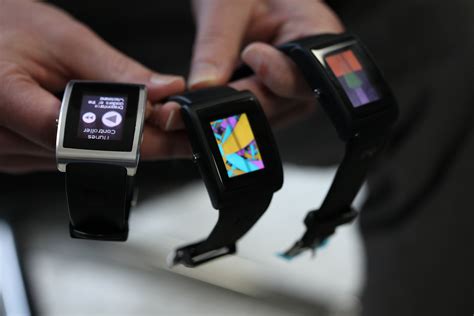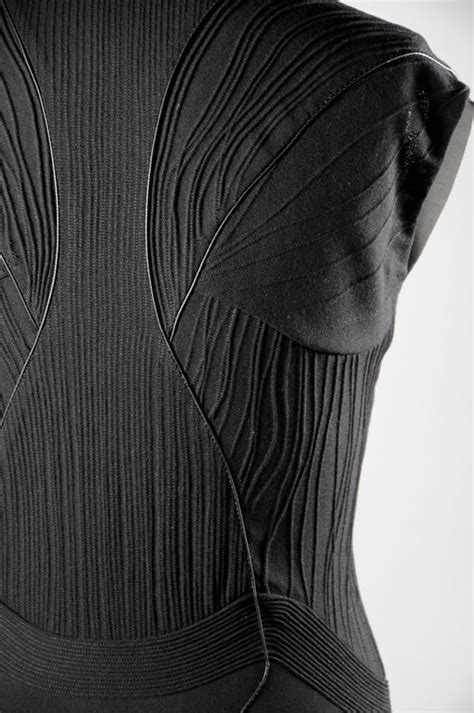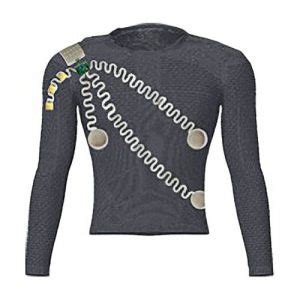Introduction
Over the past decade, wearable technology has rapidly advanced and grown in popularity. From fitness trackers and smartwatches to smart glasses and hearables, these devices have enabled us to monitor our health, stay connected, and access information more conveniently than ever before.
However, current wearables still have limitations and pose some inconveniences. Many devices have bulky form factors, short battery lives, and limited functionality. They often require frequent charging and syncing. Going forward, the future of wearable technology is seamless integration and unparalleled convenience. Advances in materials, sensors, power, displays, and connectivity will enable smaller, smarter, and more effortless wearables that blend naturally into our daily lives and routines.
Trends Driving the Evolution of Seamless Wearables
Several key trends and technologies are enabling the development of next-generation seamless and convenient wearables:
Flexible Electronics and Smart Fabrics
Conventional rigid circuit boards limit the size and flexibility of wearable devices. Advances in flexible electronics, where circuits are printed on bendable plastic substrates or woven into textiles, allow for smaller, more comfortable, and adaptable wearables.
Smart fabrics with built-in sensors and conductive fibers can measure biometrics and control devices directly from clothing and accessories. Google and Levi’s Jacquard fabric enables touch and gesture interactivity woven into a denim jacket sleeve. Printed elastic conductors can create bandage-like biomonitoring patches that stretch and move with the skin.
Energy Harvesting and Wireless Charging
Keeping wearables charged is a major pain point that limits convenience and wearability. Emerging energy harvesting techniques can capture power from body heat, motion, and ambient light to trickle charge batteries continuously.
Wireless charging will also become truly wireless. Instead of placing devices on charging pads, wearables will charge seamlessly as you move through spaces with wireless charging transmitters. Energous and Ossia are developing charging hubs that beam power over the air to devices.
Advanced and Abundant Sensors
Packing more sensors into small, low-power packages is a key enabler for wearables that can understand context and provide proactive assistance. Miniaturized sensors for motion, biometrics, environmental conditions, and more will be woven into clothing, worn on the body, and embedded in accessories.
Advancement in chemical sensors will allow wearables to non-invasively monitor key health markers like glucose, electrolytes, and blood gases. Highly accurate sensor fusion algorithms will combine data from multiple nodes for 360-degree awareness and predictive insights.
Augmented Reality and Holography
Displays constrain the form factor and use cases for many wearables, especially smart glasses. Development of micro-LED panels and holographic optical elements will enable AR glasses that are indistinguishable from normal eyewear.
Emerging virtual retinal displays will project images directly into the eye without any external screens. Vuzix and QD Laser are working on AR glasses powered by retinal projection. Retinal AR could be combined with contact lenses for even more seamless experiences.
Expanding Connectivity
Wearables will leverage pervasive high-speed wireless connectivity for real-time data streaming and cloud-assisted AI. 5G networks will provide massive bandwidth and low latency cellular connections for wearables. Expanded WiFi 6/6E, UWB, and LPWAN options will enable diverse use cases.
Wearables won’t just connect to smartphones and each other, but to smart homes, vehicles, appliances, and environments for contextual experiences. Seamless roaming between networks will be enabled by eSIM technology and heterogenous network convergence.

Form Factors for Seamless Wearables
Leveraging these enabling technologies, wearables will take many convenient forms beyond today’s typical devices:
| Form Factor | Description | Examples |
|---|---|---|
| Smart Clothing | Garments with embedded sensors, electronics, and haptics | Biometric tracking shirts, NFC payment jackets |
| Jewelry & Accessories | Earrings, necklaces, bracelets, and more with smart features | Oura ring, Motiv ring, Joule earring charger |
| Body Patches | Thin, flexible patches worn on the skin for sensing and delivery | Continuous glucose monitors, pain relief patches |
| Augmented Reality Glasses | Lightweight and fashionable with virtual displays | Vuzix Blade, North Focals, Apple Glasses |
| Hearables | Advanced wireless earbuds with sensors and AI assistants | Nuheara IQbuds, Bose Frames Alto, Sony Xperia Ear |
These seamless form factors will sense, connect, and interact with minimal user intervention. They will be worn continuously and comfortably, with long-lasting power sources. Advanced wearables won’t look like tech devices but will instead be disguised as normal apparel and accessories.

Use Cases for Seamless Wearables
Seamless wearables will enable many powerful applications and experiences, with some key examples being:
Healthcare & Wellness
Seamless wearables will provide effortless 24/7 health tracking, early detection, and condition management. Smart patches will non-invasively monitor chronic diseases like diabetes and relay data to clinicians. Biometric garments will track cardiovascular health, sleep, and activity levels to provide personalized health insights and guidance.
Connected pain relief and physical therapy patches will target electrical stimulation to treat arthritis, injuries, and neurological conditions. Mental health wearables will detect stress and mood changes, providing real-time interventions and behavioral coaching.
Augmented Living
Ambient AR glasses and earpieces will provide a seamless virtual layer to enhance daily life. Information, directions, reminders, and real-time translations will naturally overlay the world when and where needed. Virtual objects will be indistinguishable from reality.
Smart jewelry and accessories will allow effortless communication, mobile payments, identity management, and smart home/device control. Haptic garments will provide immersive tactile feedback for VR gaming, learning, and remote touch experiences.
Personal Safety
Seamless wearables will provide continuous environmental and situational awareness to enhance personal safety. Smart garments and jewelry with embedded panic buttons will send emergency alerts and location data when needed.
Computer vision wearables will provide early warning of hazards like oncoming vehicles for pedestrians and cyclists. Devices will detect falls, seizures, overdoses and automatically alert emergency services and loved ones.
Workplace Productivity
Seamless AR visors and intelligent earpieces will provide hands-free access to information, real-time collaboration, and remote assistance for frontline workers. Augmented instructions and visual guidance will improve speed and accuracy of complex workflows.
Environmental sensors in wearables will monitor for hazards like noise, heat, and toxic gases to ensure worker safety. Exoskeletons with biometric sensing will reduce strain and injuries for physical labor.

Challenges for Seamless Wearables
While the potential of seamless wearables is tremendous, there are still challenges and hurdles to overcome, such as:
Privacy and Security
Seamless wearables will collect massive amounts of highly personal data spanning health, behaviors, location, and more. Robust data protection, encryption, and privacy controls must be implemented. Users will need transparency on data collection and control over how it is used. Protections against wearable hacking will be critical.
Social Acceptability
To reach mass adoption, seamless wearables must be fashionable, unobtrusive, and socially acceptable. Devices must not be seen as creepy, distracting, or rude in social settings. There may be a period of social adjustment as advanced wearables like AR glasses become the norm.
Functionality vs Battery Life
There are always tradeoffs between device functionality, size, comfort, and battery life. Highly functional seamless wearables must achieve “set it and forget it” convenience without constant charging. Significant advances in energy density, harvesting, and power consumption are still needed.
Cost and Affordability
The advanced components and materials needed for seamless wearables can be costly compared to conventional electronics and fabrics. For seamless wearables to be accessible to the mass market, they must come down the cost curve and be affordable to average consumers, not just early adopters.
Conclusion
The future of wearable technology is incredibly promising. A decade from now, we will be wearing smart devices that bear little resemblance to today’s gadgets. Enabled by innovations in electronics, materials, sensors, power, networking, and user interfaces, wearables will become truly seamless extensions of ourselves.
Unobtrusive and highly functional, future wearables will continuously sense our biology, environment, and context to improve health, augment our perceptions, increase productivity, and enhance our daily lives. Technical innovations combined with pleasing aesthetics and social acceptability will make wearables ubiquitous and indispensable.
The road to this future involves overcoming limitations in privacy, power, cost, and public acceptance. But the trends are clear – our devices are becoming more personal, more seamless, and more convenient. In the coming years, wearables as we know them will disappear. In their place will be intelligent apparel and accessories that infuse our lives with superpowers while blending naturally into our selves and our world.
FAQ
What are the key trends driving the development of seamless wearables?
The key trends enabling seamless wearables include flexible electronics, smart fabrics, energy harvesting, wireless charging, miniaturized and abundant sensors, augmented reality displays, and expanding wireless connectivity options.
What new form factors will emerge for seamless wearables?
Beyond today’s smartwatches and fitness bands, seamless wearables will increasingly take the form of smart clothing, jewelry, body patches, augmented reality glasses, and advanced hearables. These devices will have sensors and connectivity discretely embedded to minimize intrusiveness.
What are some of the most impactful potential use cases for seamless wearables?
Some of the most transformative applications for seamless wearables include continuous health monitoring, chronic condition management, immersive augmented reality guidance, enhanced personal safety, and hands-free information access for improved workplace productivity.
Will seamless wearables be affordable for the average consumer?
Currently, the advanced materials and components in seamless wearables carry a high cost premium. However, with advancements in manufacturing and economies of scale, the cost of seamless wearables is expected to decrease significantly to be accessible to mass market consumers.
How will privacy and security be protected with the sensitive personal data collected by seamless wearables?
Privacy and security will be paramount as wearables become more seamless and ubiquitous. Robust encryption, secure data transmission, and tightly controlled access will be essential. Users must have transparency into data collection and control over usage. Ongoing cybersecurity efforts will work to prevent hacking of wearable data and systems.

No responses yet